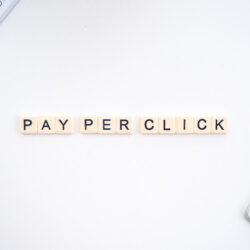
Tips to Master the Future of Paid Ads

With about 5.4 billion Google searches per day and almost 1.9 billion daily active users on Facebook; if you think that the future of online advertising is dark, think again!
Google and Facebook have become the top-most digital media channels that hold the most number of active users and quality consumers. In the social world today, there are a number of other channels that are becoming new marketing hubs as they’re nurturing billions of active users on a daily basis. These include YouTube, Twitter, Pinterest, TikTok, Instagram, and others. Due to the high-quality advertising infrastructure and consumer base, these platforms hold the ever-increasing authority to boost any business.
As more and more advertisers choose to market their products and services on such platforms, the competition between these advertisers to rank higher is tough. So to, are the criteria of these online platforms, resulting in increased efficiency of these marketing campaigns, better and renowned business brands, and the quality consumers that actually convert into sales. According to a source, one of the paid advertisement structures called Pay Per Click (PPC) converts 50% of the traffic reaching these ads into actual sales.
Online media advertising is a must if you’re looking to reach a new, targeted audience—fast. Due to the benefits that online media provides businesses, they present more of a challenge to reach their targeted audience organically. Paid media bridges the gap between brands and their potential customers quickly and more efficiently.
What are avenues that any business or individual can harness the multi-faceted benefits of paid ads?
1. Understand your advertisement goal
It is essential to have a deep understanding of the specific goals you are aiming to achieve through your paid campaigns. You can divide your campaign goals into broader categories like:
• Awareness: Build brand awareness or increase reach.
• Consideration: Send traffic to your website or your social page, increase engagement, encourage app installs or video views, generate leads, or encourage people to communicate with you through your inbox.
• Conversion: Increase purchases or leads via your site or app or drive traffic to offline stores.
2. Understand your target audience
By having a deep knowledge of what your product/service is you can better understand your target audience. Understand whom you are catering to and how to reach them. If you’re looking to sell to women, you should look for an active community of female consumers that are already interested in a product/service similar to yours. Advertising to the community, age group, gender, or geographic region that doesn’t contain your ideal customer can prove to be a waste of capital, time, and resources.
3. Identify the Social Platform Your Ideal Customer Uses
If you’re looking to target an adult community of people or professionals, Facebook might be your go-to host for such a community. Likewise, more professionals and B2B businesses are active on more professionally used platforms i.e. LinkedIn and Google.
Once you identify what platforms you’re going to advertise on, study the advertisement campaigns particular to that platform and ways to succeed through it.
4. Types of Ads
Study different ads to determine which are the most optimal ones for your product. Having an in-depth knowledge of the types of ads and what’s performing well for your type of business is mandatory for the success of your paid campaign. It can be photo display ads, video ads, story ads, slideshow ads, playable ads, and much more depending on the platform you want to use.
5. Allocate Your Paid Ads Campaign Budget
While opting for paid ads campaigns, allocate your budget according to your goals and the platform you’re going to advertise on.
6. Organic Social Posts to Support the Ads Campaign
If you’re using Facebook, LinkedIn, Twitter, Pinterest, or other social platforms to run paid ads, it is a healthy practice to use your organic posts in sync with what you’re advertising through paid ads. Let your organic posts inform you about your paid campaigns and discuss and brainstorm your advertising goals.
7. Design Mobile-Friendly Ads
Design ads that are mobile-friendly. As of October 2020, there was an estimated 4.08 billion active mobile social media users worldwide. The number increases with every passing day, so the best practice is to show your best advertisements to mobile users.
8. Test Ads for Performance Optimization
Before running a full-fledged ads campaign, the best practice is to test run your ads. This practice provides many benefits at hand and in the long run.
• You can identify any setbacks that may occur due to a number of factors and fix them while running a low-budget campaign.
• You can also identify the target audience that works better for you.
• You can A/B test with multiple ad sets and pick the one that performs better and exclude the ones with low-performance metrics.
9. Keep Track of Analytics
Professional marketers love analytics and like to keep track of numbers and performance. It’s a highly professional practice to keep track of numbers and analytics. It helps you adjust your ads campaigns while you move ahead with ads and can save you a lot of resources, time, and money.
This article provides a brief overview of how professionals and individuals looking to run paid campaigns on online media can create effective ads campaigns that actually convert and bring in capital. By following the key practices discussed here, beneficial and engrossing ad campaigns can be run effectively.

